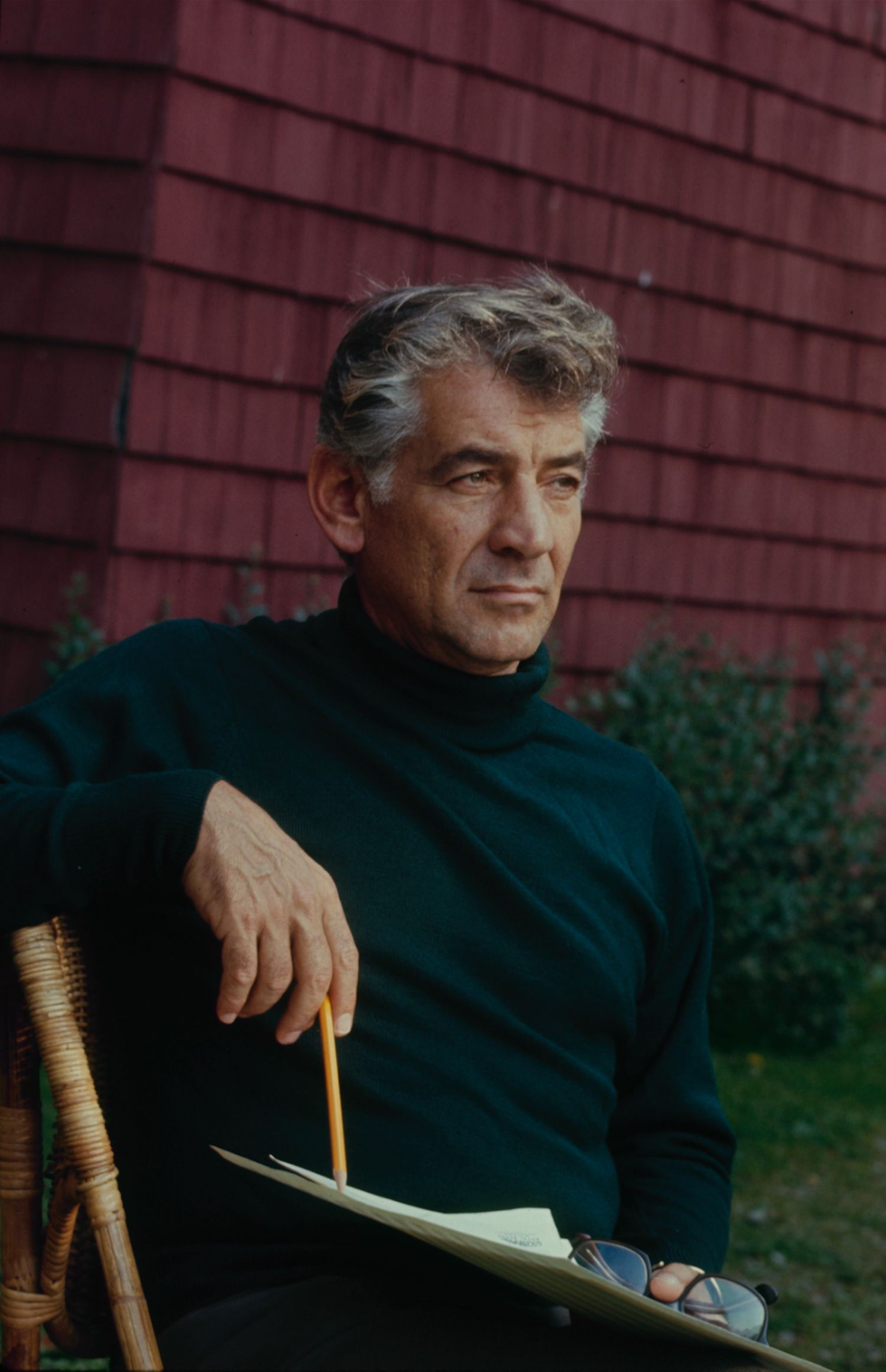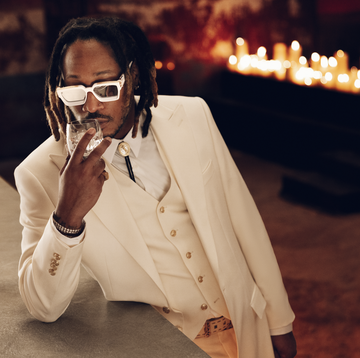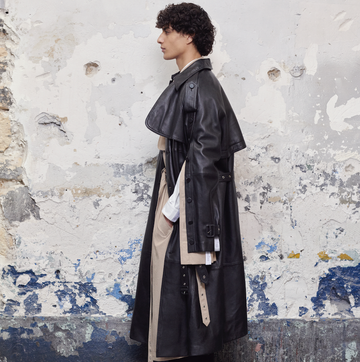This is how Tom Wolfe described Leonard Bernstein in “Radical Chic: That Party at Lenny’s”, a famous New York magazine story from 1970: “Lenny is wearing a black turtleneck, navy blazer, Black Watch plaid trousers and a necklace with a pendant hanging down to his sternum. His tailor comes here to the apartment to take the measurements and do the fittings. Lenny is a short, trim man, and yet he always seems tall. It is his head. He has a noble head, with a face that is at once sensitive and rugged, and a full stand of iron-gray hair, with sideburns, all set off nicely by the Chinese yellow of the room. His success radiates from his eyes and his smile with a charm that illustrates Lord Jersey’s adage that ‘contrary to what the Methodists tell us, money and success are good for the soul.’”
As so often, Wolfe, himself no slouch in the sartorial stakes, was right. Even in middle age, Bernstein — prodigiously talented writer of symphonic and orchestral music, ballet, film and theatre scores, choral works, opera, chamber music, and pieces for the piano — was a fine- looking specimen of mid-century masculinity. Great hair, seductive, gun-dog eyes, a way with a cigarette. And, as Bradley Cooper demonstrates in Maestro, his new magnum opus on Bernstein’s life, Lenny did love a polo-neck (“turtlenecks”, as the Americans insist on calling them). Archive images of the great man at both work and play suggest a wardrobe of multiple roll-necks in many hues and knits, worn either solo, with slacks, or, jazz style, under a jacket.
Bernstein, both classicist and pop-culture icon, wore his polo-neck as a non-conformist statement of difference — cognisant that this beatnik apparel was considered unconventional, especially amongst his tuxedo-and-tail-coat-wearing, baton-wielding peers. Not just any casual sweater, but also very much not a starched shirt and bow tie.
Perhaps taking sartorial cues from his pals in the Black Panthers (Wolfe’s New York story was about a party Bernstein threw for the Panthers), who had adopted the dark polo-neck as part of their uniform, Bernstein played the part of the well-dressed rebel, employing the services of both a Jewish tailor and an English dresser. (“Think Yiddish, dress Briddish,” as they used to say on Madison Avenue.)
East 64th Street’s Otto Perl had survived the Nazi concentration camps of Buchenwald and Dachau before becoming the favoured cutter for Manhattan’s musical elite. He made black-tie tails and capes for violinist Itzhak Perlman and tenor Luciano Pavarotti, as well as superstar slugger Joe DiMaggio and the young Lenny Bernstein. Clearly, Perl knew how to cut for the kind of vigorous arm action that both baseball-hitting and orchestra-conducting require.
Bernstein was a physical conductor, big on expressing his music through performance and movement. Even when working from behind the piano (his favoured position of command) Bernstein jolted like a human lightning rod. He was an arm-waver, a head-nodder, a foot-stomper, a forelock-shaker and even a pogo-er. In the 1950s and 1960s, no conductor was more celebrated or more derided by the uptight musical establishment than the free-wheeling Bernstein. Fizzing with creative energy, Bernstein might, say, conduct a Verdi opera at The Met on Monday, knock off some music for a gangster movie on Tuesday (he scored the 1954 Marlon Brando classic On The Waterfront), broadcast one of his Saturday-morning New York Philharmonic “Young People’s Concert” programmes for television and then goof around playing The Kinks’ “You Really Got Me” for prime-time TV.
But his most popular masterpiece remains West Side Story, the 1957 musical, Romeo and Juliet in Manhattan, with lyrics by Stephen Sondheim and score by Bernstein, and songs that seemed to have been composed on ecstasy and heartbreak, gasoline and pomade.
Bernstein died in 1990, aged 72. His music lives on, and so does his taste in knitwear. In the pantheon of American style icons, there’s a place for him. ○
“Maestro” is in cinemas now and on Netflix from 20 December.















